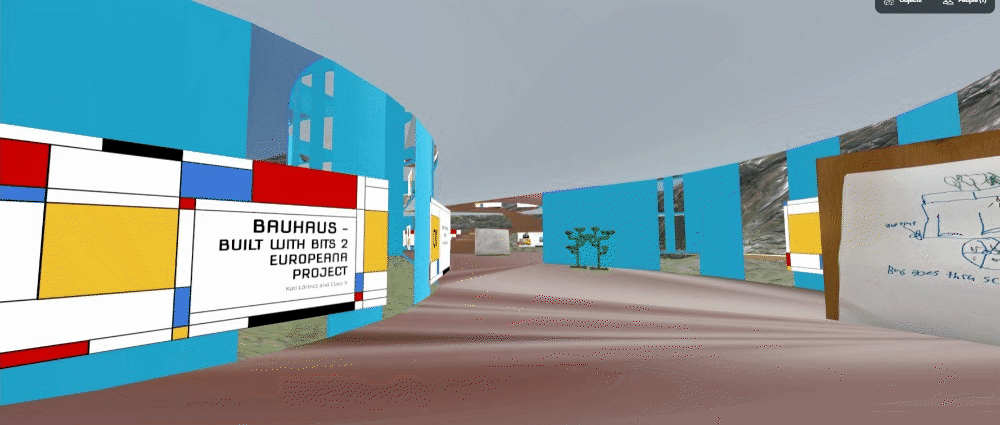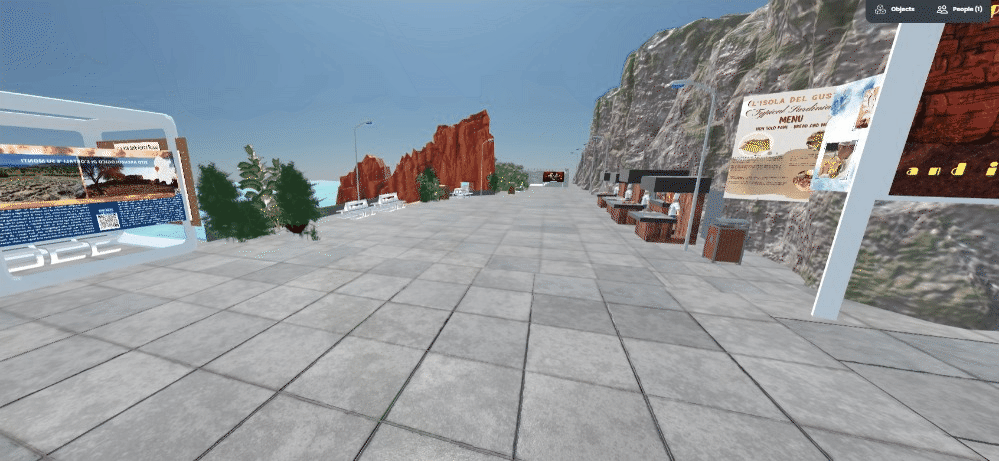Immersive technologies like virtual reality (VR) and augmented reality reality (AR) create distinct experiences by merging the physical world with the digital. They offer the opportunity to engage audiences with cultural heritage in new ways, and offer exciting possibilities for education.
These possibilities have been fully demonstrated by Built with Bits, a mentoring programme and educational challenge for students and educators, organised by the Europeana Initiative. The second edition, run by partners Macedonia Studio, took part in the second half of 2022. It trained 262 students and 19 educators and cultural heritage professionals to use Mozilla Hubs (a virtual world platform) to develop virtual spaces which used cultural heritage resources to offer a creative solution for a local issue. In doing so, the programme fostered collaborations between schools, universities, local museums and libraries, digital artists and UX designers, researchers, historians, architects, local authorities and tourism centres.
The projects developed for the programme are varied and inspiring and provide rich answers to the question: why use immersive technologies in education?
7. Virtual spaces can connect you with the New European Bauhaus movement and its values of sustainability, inclusivity and togetherness.
This is how Kati Lőrincz developed her project, New European Bauhaus Treasure Hunt with more than 50 students of the Szabó Lőrinc Bilingual high school in Budapest and two external collaborators, the 3D artist Alexedu Cabanillas and Ekin Baskentli, an architecture student.
Kati says, ‘The New European Bauhaus Treasure Hunt was built on the idea of celebrating art and culture and linking sustainability and inclusion to our local treasures. Our school is in the Bauhaus area near Napraforgó Street, a pleasant and unique street with houses made from modern materials which use state-of-the-art structural designs by the era’s notable architects. I planned the project around learning not only a new vocabulary related to technology, architecture and styles but also culture, European values, sustainability, SDGs and inclusion. By completing this project, students not only learned and practised English but also became acquainted with the European and Hungarian Bauhaus movement and local history’.
Guess what? The space was awarded with the Best New European Bauhaus project. Find out more about New European Bauhaus.





